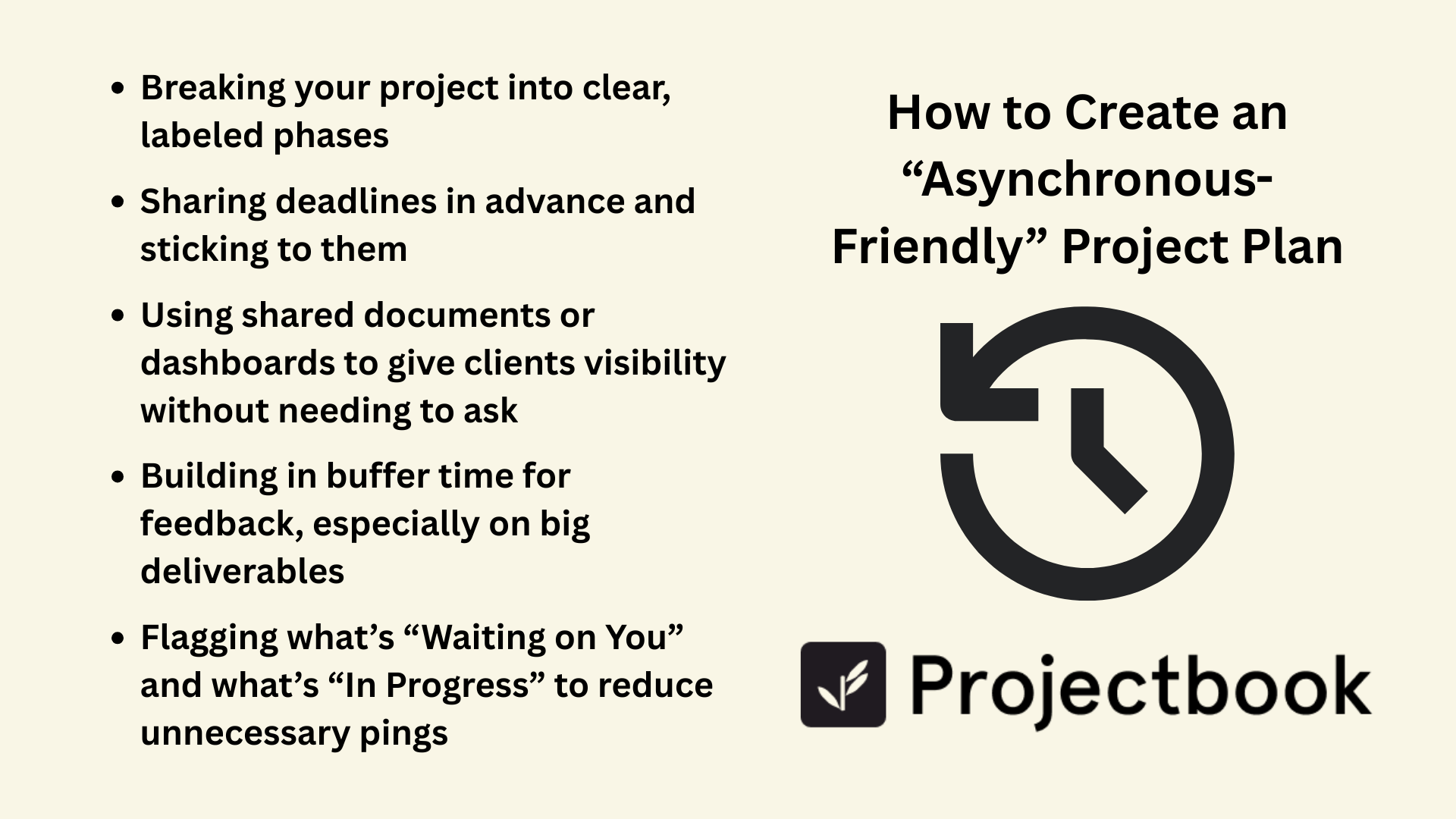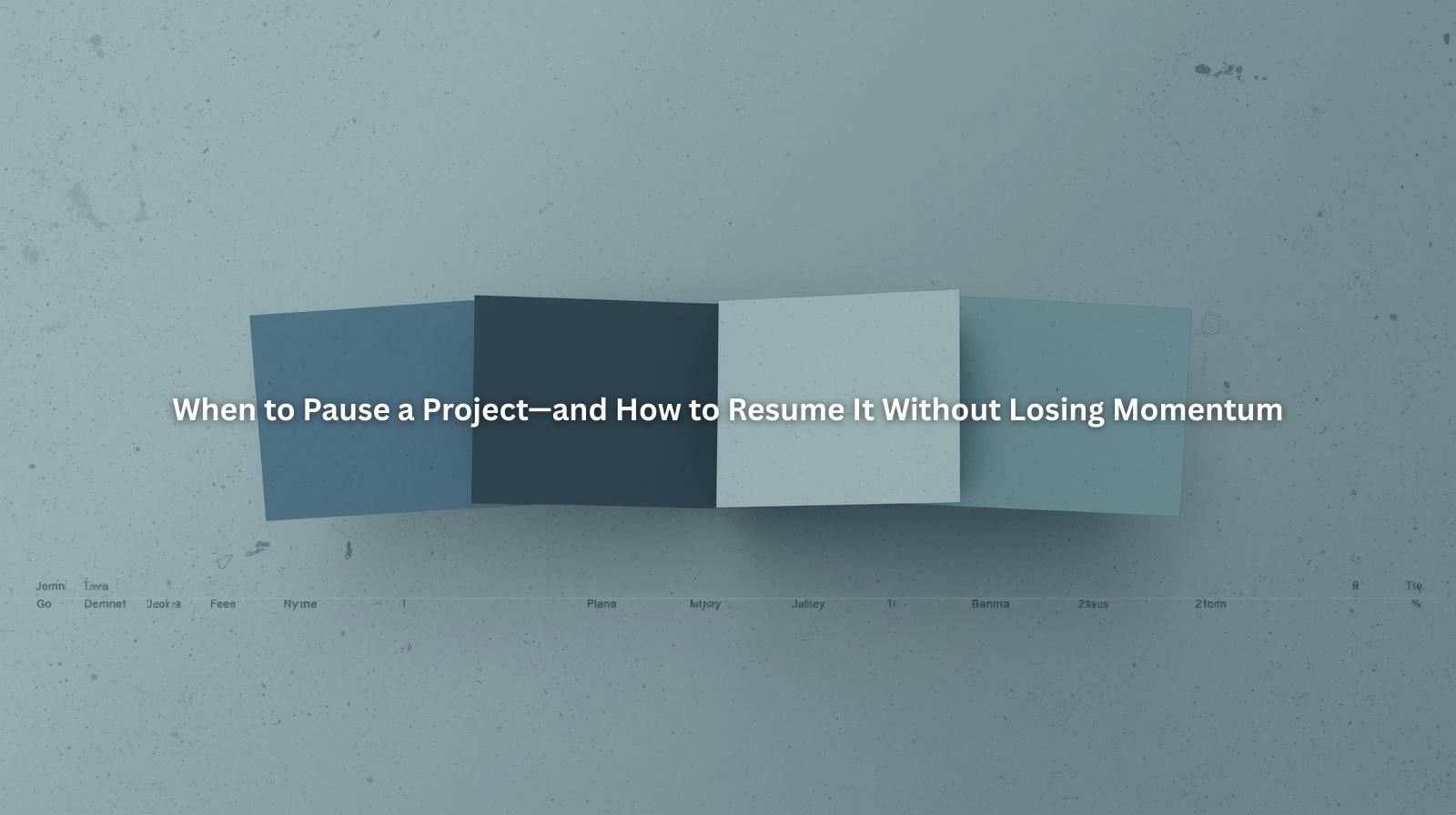Working Across Multiple Time Zones? Here’s How to Stay Sane and On Schedule
.png)
Table of Contents
- The Rise of the Time-Zone-Flexible Freelancer
- Why Time Zone Confusion Creates Real Stress
- The Core Rules for Managing Time-Zone Differences
- How to Create an “Asynchronous-Friendly” Project Plan
- Tools That Actually Help (Not Overwhelm)
- How ProjectBook.co Keeps Your Projects on Track—Wherever Your Clients Are
- FAQ: Working Across Time Zones as a Freelancer
1. The Rise of the Time-Zone-Flexible Freelancer
Whether you’re a designer in Austin working with a client in London, or a writer in Bali collaborating with someone in New York, working across time zones is now part of the job.
And it can be a massive advantage: fewer meetings, more flexible hours, and the ability to work with anyone, anywhere.
But it also introduces new challenges: delayed replies, confusing calendar math, and the fear of missing something important while you sleep.
The key to staying sane isn’t to be available 24/7—it’s to build a workflow that respects time differences while keeping projects moving.

2. Why Time Zone Confusion Creates Real Stress
A single time mix-up can lead to a missed call, delayed feedback, or the awkward realization that a deadline was interpreted in their time zone—not yours.
This creates stress because:
- You feel pressure to always double-check time math
- You may hesitate to schedule calls, fearing you’ll pick the wrong time
- You end up waiting for replies with no clear sense of “when”
Over time, these small miscommunications can create unnecessary friction in your client relationships.
The solution isn’t more meetings or real-time availability—it’s better structure, better boundaries, and smarter communication.
3. The Core Rules for Managing Time-Zone Differences
Here are the non-negotiables if you want to work well across time zones:
Always specify time zones in writing.
Never say “Let’s meet at 2.” Always say “2pm EST” or “2pm your time.” Tools like Calendly or World Time Buddy can help, but don’t assume—be explicit.
Confirm time zones in your kickoff message.
Ask your client, “What time zone are you in?” at the start of the project. Set expectations right away.
Set response-time expectations.
Let clients know when you're usually online, and what your standard reply window is (e.g., “I respond to emails within 24 hours, Monday–Thursday”).
Batch communications.
Instead of back-and-forth messages across time zones, send thoughtful updates with next steps so the project can keep moving even when you're offline.
Anchor deadlines in dates, not just days.
Say “by Wednesday, June 12, 5pm PST” instead of “by Wednesday”—especially when working across continents.
4. How to Create an “Asynchronous-Friendly” Project Plan
The most time-zone-friendly freelancers don’t just work around the issue—they design workflows that don’t depend on real-time communication.
This means:
- Breaking your project into clear, labeled phases
- Sharing deadlines in advance and sticking to them
- Using shared documents or dashboards to give clients visibility without needing to ask
- Building in buffer time for feedback, especially on big deliverables
- Flagging what’s “Waiting on You” and what’s “In Progress” to reduce unnecessary pings
If you’re working while they’re sleeping (and vice versa), make it easy for both sides to keep moving without needing constant clarification.

5. Tools That Actually Help (Not Overwhelm)
You don’t need 10 tools. You just need a few that make time-zone work feel simple:
- **Calendly:** Great for scheduling across time zones without back-and-forth
- **World Time Buddy:** Quick comparisons between multiple cities
- **Google Calendar:** Set events in their time zone so you see it in yours
- **Loom or voice notes:** Use async videos to explain feedback without needing a call
- ProjectBook.co: Track timelines, deliverables, and status updates in one shared view (see next section)
Use tools that help clarify—not clutter—your workflow.
6. How ProjectBook.co Keeps Your Projects on Track—Wherever Your Clients Are
ProjectBook is built for freelancers who want to stay professional and organized—even when their clients are waking up as they’re logging off.
Here’s how it helps with time zone juggling:
- Assign tasks and deadlines with clear due dates, visible to both you and the client
- Use tags like “Waiting on Client” or “Feedback Needed” to show who’s up next
- Share project dashboards so clients can check in without emailing you
- Add notes or context to tasks to reduce the need for real-time clarification
- Duplicate templates with pre-set timelines that already account for buffer time
Instead of wondering what’s due or waiting for a response to keep moving, you always know where things stand—and your client does too.
That kind of visibility builds trust and reduces stress. No matter the distance.
7. FAQ: Working Across Time Zones as a Freelancer
How do I handle real-time meetings when we’re hours apart?
Find overlapping windows that respect both time zones. Set a recurring time if needed—and record meetings when possible for review.
What if a client doesn’t respect my working hours?
Communicate clearly and kindly. Remind them of your work hours and suggest async options (Loom videos, shared docs, etc.).
Do I need to be online at odd hours to be a “good” freelancer?
Absolutely not. What matters is clarity, communication, and delivering when you say you will—not constant availability.
Can ProjectBook track tasks with time zones?
Yes! You can set deadlines that show in your local time, while using shared dashboards so clients see the same milestone timing on their end.
Final Word
Working across time zones doesn’t have to mean late-night calls, confusing deadlines, or non-stop notifications.
With the right habits and a clear system, you can manage projects calmly, communicate confidently, and deliver great work—no matter what time it is where your client lives.
You don’t need to be everywhere at once. You just need tools and systems that work while you rest.
With ProjectBook.co, your projects stay on time, your clients stay informed, and your business stays grounded—even across oceans.


